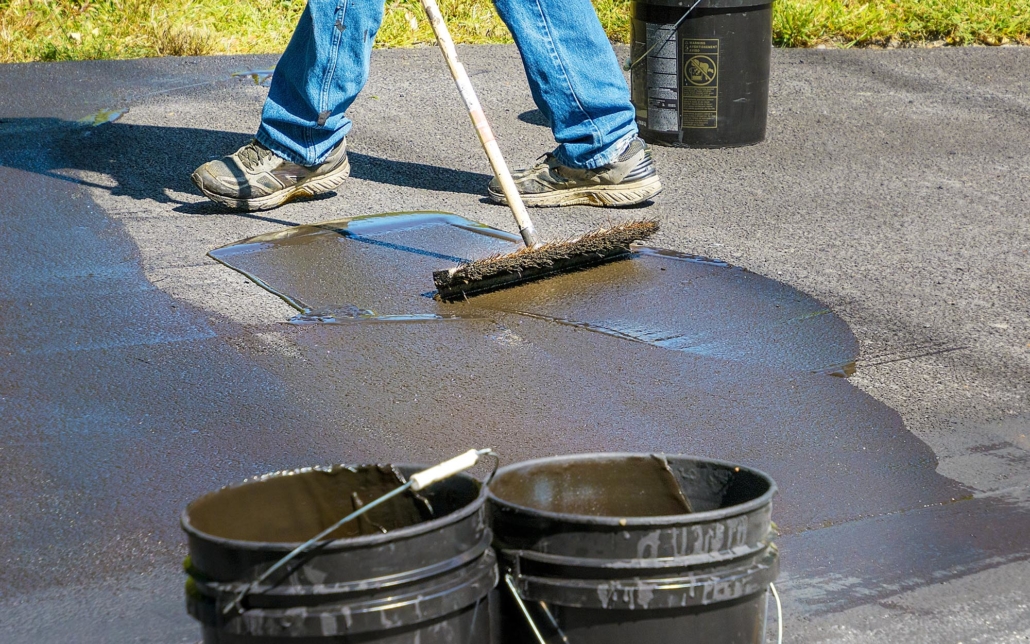Warm Mix Asphalt: A Lasting Option for Sidewalk
Hot Mix Asphalt (HMA) has emerged as a leading lasting selection for sidewalk options, using a myriad of environmental benefits and cutting-edge modern technologies. As the demand for environmentally friendly building and construction methods expands, exploring the nuances of HMA's sustainability can give valuable insights into the future of pavement remedies.
Ecological Advantages of Hot Mix Asphalt

Moreover, Warm Mix Asphalt helps to mitigate urban warm island impacts. Its dark shade soaks up sunshine, decreasing the quantity of warmth showed back right into the environment contrasted to lighter-colored pavements. This can decrease ambient temperature levels in city areas, lowering the need for a/c and inevitably decreasing power intake.
In addition, Hot Mix Asphalt adds to boosted stormwater management. Its porous nature enables water to penetrate the pavement and reenergize groundwater supplies, decreasing overflow and the threat of flooding. These environmental benefits make Hot Mix Asphalt a sustainable choice for paving freeways and roadways.
Power Performance in HMA Production
Is power performance a critical variable in the manufacturing of Hot Mix Asphalt (HMA)? Energy plays a considerable role in the production of HMA, influencing both price and environmental sustainability. One essential aspect of power effectiveness in HMA production is the usage of cozy mix asphalt (WMA) innovations.
Furthermore, developments in plant technologies have actually led to even more energy-efficient HMA production processes. By optimizing energy use in HMA manufacturing, the industry can minimize its carbon impact while preserving high-quality pavement products.
Recyclability of Warm Mix Asphalt
The recyclability of Warm Mix Asphalt (HMA) is a critical facet of its sustainability and long-term environmental effect. HMA is just one of the most recycled materials in the USA, with over 100 million lots of recovered asphalt sidewalk (RAP) being reused yearly in brand-new sidewalk building. Recycling HMA uses numerous environmental advantages, such as lowering the need for virgin materials, reducing energy consumption throughout manufacturing, and lowering the quantity of waste sent to garbage dumps.
The procedure of recycling HMA includes crushing the existing pavement, squashing it into smaller sized items, and blending it with brand-new aggregate and asphalt binder to develop a recycled mix. This recycled mix can typically click over here now execute along with or perhaps better than conventional HMA, while needing fewer resources and creating reduced greenhouse gas discharges. By including RAP into brand-new sidewalk jobs, road companies can save natural deposits, decrease costs, and reduce the environmental footprint of road construction and maintenance activities. Generally, the recyclability of HMA plays a substantial function in promoting sustainable methods within the pavement market.

Long-Term Efficiency of HMA
Asphalt pavements demonstrate longevity and durability over a prolonged duration, mirroring the lasting efficiency of Warm Mix Asphalt (HMA) The longevity of HMA can be credited to its capability to stand up to heavy web traffic lots, look at this now harsh weather condition problems, and the impacts of aging. Research studies have actually shown that well-designed and appropriately built HMA sidewalks can last for twenty years or more with regular maintenance. The secret to maximizing the long-term efficiency of HMA exists in utilizing top notch products, complying with best practices in construction, and implementing effective upkeep approaches. Appropriate drain, routine inspections, and prompt repairs are important for preserving the architectural stability of HMA pavements over time. In addition, advancements in HMA technology, such as the use of polymer-modified binders and warm mix asphalt, have further boosted the resilience and long life of HMA sidewalks. By prioritizing top quality building navigate to this site and maintenance methods, HMA remains to prove itself as a cost-effective and lasting option for lasting sidewalk infrastructure.

HMA: Toughness and Sustainability
Demonstrating both durability and sustainability, Warm Mix Asphalt (HMA) has come to be a foundation in the construction of resilient pavement frameworks - regrading. HMA's durability originates from its capability to endure hefty tons, rough climate condition, and high web traffic quantities, making it a trusted option for roads, highways, and flight terminal paths. The structure of HMA, which commonly includes accumulations, binder, and filler, plays a vital role in improving its long life and resistance to tear and use
Moreover, HMA's sustainability lies in its recyclability and energy-efficient manufacturing process. The ability to recycle reclaimed asphalt sidewalk (RAP) in new HMA mixes lowers the need for virgin materials and lessens the ecological impact of sidewalk construction and maintenance. Furthermore, the power performance of producing HMA hinges on its reduced blending temperatures compared to other pavement materials, causing decreased power intake and greenhouse gas exhausts.
Conclusion
In final thought, hot mix asphalt (HMA) offers a lasting remedy for sidewalk with its ecologically friendly characteristics. HMA's recyclability, energy effectiveness in production, and lasting durability make it an eco-friendly selection for roadway building.
HMA is one of the most recycled materials in the United States, with over 100 million tons of redeemed asphalt sidewalk (RAP) being reused annually in brand-new pavement building and construction.The process of reusing HMA entails grating the existing pavement, squashing it into smaller sized pieces, and blending it with new aggregate and asphalt binder to produce a recycled mix.Asphalt pavements show resilience and strength over a prolonged period, mirroring the long-term efficiency of Hot Mix Asphalt (HMA) Furthermore, advancements in HMA modern technology, such as the use of polymer-modified binders and warm mix asphalt, have additionally boosted the durability and durability of HMA pavements. The capability to recycle redeemed asphalt sidewalk (RAP) in new HMA combinations minimizes the need for virgin materials and lessens the environmental effect of sidewalk building and maintenance.